I’m sure by now, you’re probably aware that different brands take different approaches in delivering similar products. It doesn’t matter if you’re buying a new electric car, a pair of headphones or a smartphone. Companies like Samsung and Huawei have been known for going overboard, flaunting features like 100x space zoom, foldable displays, 120-hertz refresh rates and “Phenomenal Cosmic Power!”
Ok, that last one was Jafar from Aladdin, but I think you get the point. These products are bold and innovative and no one’s denying that, but all that bombast usually comes with a price, one that leaves you’re bank account looking like you’ve just been scammed by a Nigerian prince.
At the opposite end of the spectrum, you get this, the LG V60. It’s unassuming. It sports most of the specs the other big boys are playing with and it has an odd case that sports a secondary display. And the best part is that it’s up to 50% cheaper than some of its closest competitors. But the real question is: is it any good? Well… let’s find out.
LG’s been a major playing in the smartphone space since the early days of Android. The company has had a handful of great hits, but it’s never been as successful as Samsung. After toying with the modular smartphone concept with the LG G5 back in 2016, the company’s flagship devices have been relegated to the back burner as many of its competitors have stepped up.
But the new LG V60 sets a different tone, delivering a phenomenal experience at just the right price which could make consumers think twice before blindly handing over their cash to Samsung this year.
Ultimate value
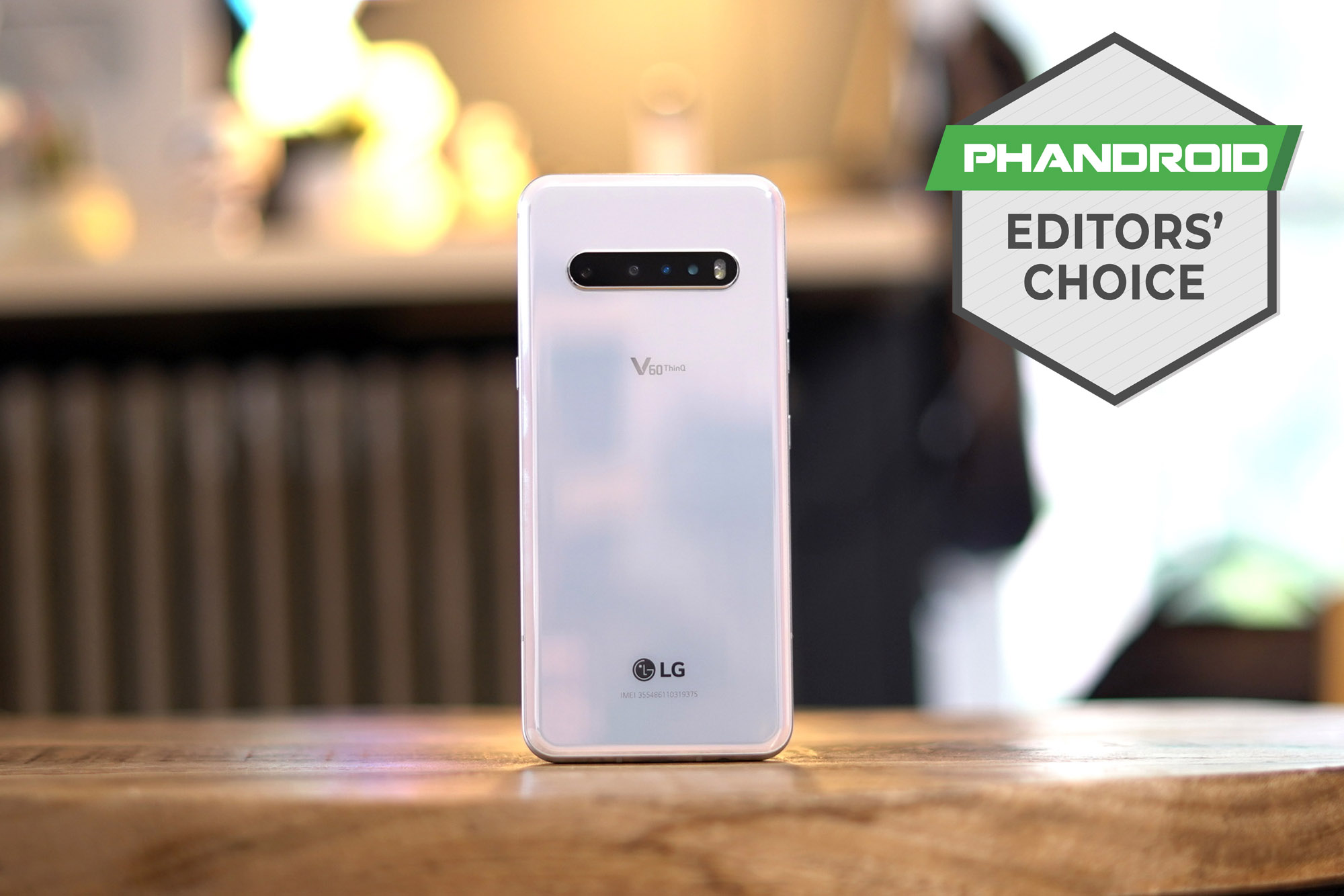
Now, I know that a smartphone’s price isn’t the most important factor that we all consider when buying a new device. If it was, the Galaxy Z Flip wouldn’t exist and we’d all be walking around with Motorola phone in our pockets. It’s more about achieving the right balance and the V60 does just that.
So, how just does the V60 costs? You can’t buy it unlocked, but the cheapest price from a US service provider is $800 for the phone or $900 if you want the phone and the dual-screen case. Compared to the new Galaxy S20 lineup, that’s a steal since you still get the new Snapdragon 865 chipset, 5G and camera setup that’s worthy of the phone’s flagship status.
That being said, since this phone is selling for 20% less than Samsung’s S20 base model, LG did have to make a few compromises. The V60 comes with a lower resolution Full HD+ display, it only has 8GB of RAM and the triple camera on the back is comprised of a standard ultra-wide and ToF setup. That’s right, the telephoto camera that seems to be so popular these days is missing. But while it’s lacking in a few places, the V60 makes up for it by featuring a beefy 5,000 mAh battery, a quad-mic system for incredible audio recording and a 3.5mm headphone jack with LG’s unique quad-DAC setup which delivers an impeccable audio experience for a smartphone.
Put all that together and the LG V60 could actually be one of the best devices we’ve seen in 2020.
Hardware & performance

If you’re a fan of big phones, the LG V60 will be right up your alley. Its 6.8-inch display is massive, but the lack a curved panel means there are significant bezels all the way around. While this makes the front of the phone less appealing than its competitors, the flat panel has improved usability with fewer false touches with the side of your hand and a dramatic reduction in glare along the edges.
To keep the costs down, you only get a FHD+ display, but you won’t really be able to notice individual pixels unless you go looking for them. A hole-punch for the front-facing camera would have been less noticeable than the centrally located notch, but it’s not a huge issue.
The metal and glass design of the phone isn’t a dramatic change from last year’s V50, but when you flip the phone over to the back, you’ll notice that LG has added a ring to outline the cameras which also feature a slight bump due to the sensor size increase. When holding the phone in your hand, you’ll also feel the added heft and girth. I’ll tell you this, a 5,000 mAh battery isn’t light and it definitely takes up a lot of space.
The Snapdragon 865 is undoubtedly the must-have chipset this year if you’re looking for a flagship smartphone and 5G connectivity. It delivers incredible performance on the V60, giving you more than enough power to play all the best games Android has to offer and keep the phone’s UI stutter-free.
If you’re a hard-core multi-tasker, you might be disappointed with only getting 8GB of RAM here, but it’s honestly more than enough to satisfy most users. You occasionally notice apps being dumped from memory, but unless you’re constantly switching between games, you shouldn’t have to wait more than a second or two for the 865 to load it back up.
Battery
Now, LG didn’t add in this massive battery to compete with the Galaxy S20 Ultra. The extra capacity is needed to keep the phone’s dual-display powered up. Without it, the V60 can easily make it through a day and a half or even two days with about 10 hours of screen on time. It’s not the best battery life I’ve ever seen, but it’s up there. As you can imagine, the dual-display will eat into that a bit, but you’ll easily be able to make it through a long workday with 7-8 hours of screen on time if you keep the second display powered on continuously.
No matter how you slide it, you’ll have a very hard time killing this thing in a single day.
To top the battery off you get Qualcomm’s Quick Charge 4.0+ which will take the phone from 0 to 100 in an hour and 40 minutes. You also get wireless charging, but you won’t be getting the fancy reverse wireless charging features that Samsung and Huawei have been including for the past few years.
Cameras
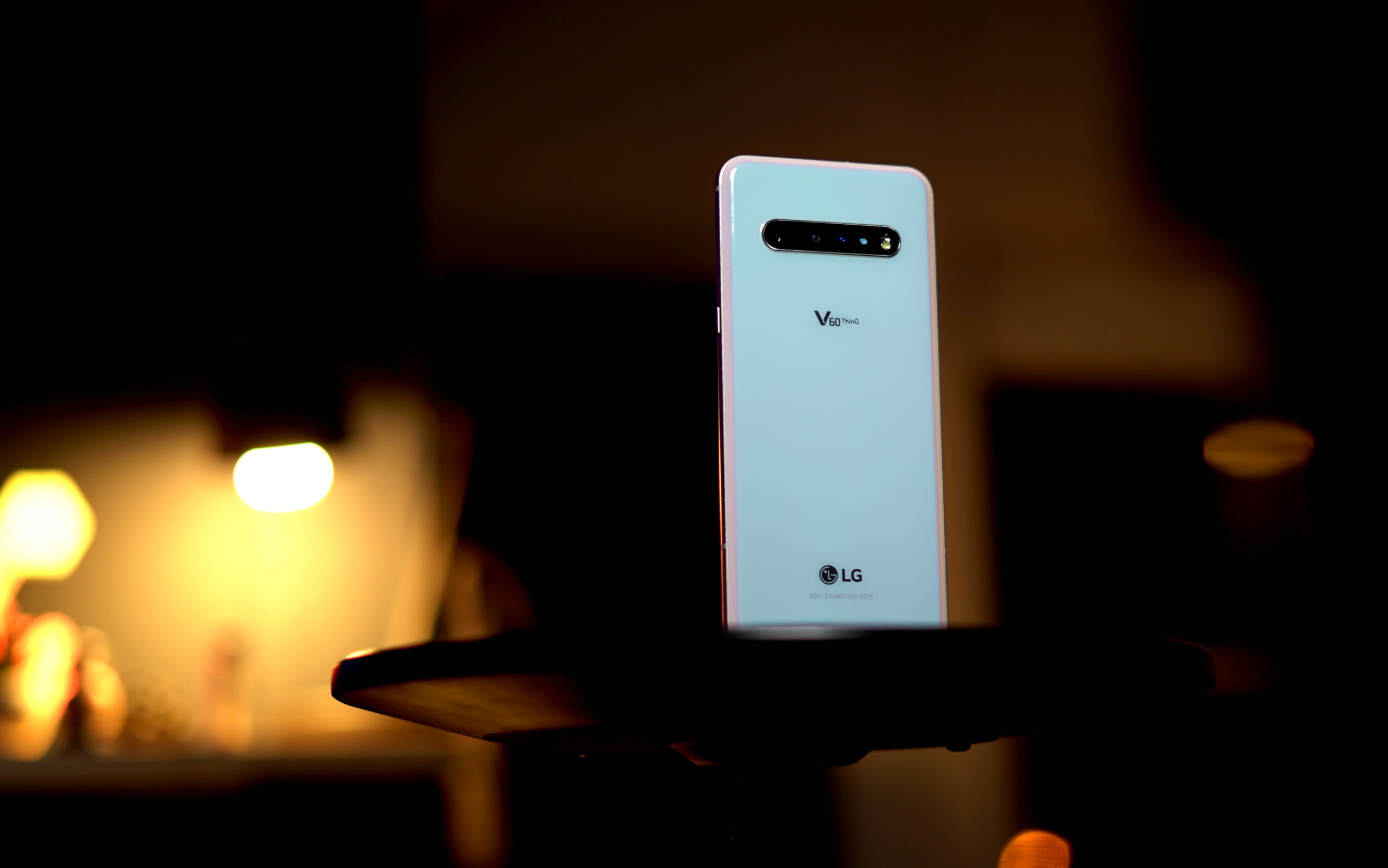
I have to admit, when looks at the LG V60’s camera specs, the phone seems to lag behind other 2020 flagship smartphones. For the launch camera, you get a 64MP sensor that delivers 4-1 pixel binning for its 16MP shots and then you get a 13MP ultra-wide camera, something that LG pioneered back in the day. Other then that, there’s a ToF sensor for depth information, but LG’s left out the ever-popular telephoto camera which Samsung, Oppo and Huawei have been using as their main marketing feature.
LG V60 versus Samsung Galaxy S20+ camera comparison
That being said, the V60 still offers 2X hybrid zoom thanks to it’s 64MP main sensor which honestly turns out nearly as sharp as what we’ve seen from other phones with dedicated zoom cameras.
But while the hardware LG is using is pretty simple, the image quality you get from them is superb. The images aren’t as sharp as they should be, but the image processing is natural with great dynamic range, consistent white balance and accurate color reproduction. The large sensor and pixels also deliver great low light shots. The only disappointment here is that LG has a long way to go before it catches up with the competition with its phone’s dedicated night mode setting. The results don’t really add a lot of light when simply switching it on and moving the slider over tends to overexpose the scene and leave you with a blurrier shot.
While not having a telephoto camera is disappointing, I’m glad they opted for the ultra-wide instead. Having a wider field of view is amazing for landscape shots and pictures in the city, giving you shots that honestly change the way you see the world.
Like it typically does, LG’s managed to keep barrel distortion to a minimum even though the 12mm lens.
The phone’s 10MP front-facing camera is on par with what I’ve seen from the competition, though the 30mm lens doesn’t give you a whole lot of extra room when taking pictures with friends.
If you’re into capturing video, all cameras offer 4K video capture at up to 30 fps, but the main one can do 60 and if you want to go even further, 8K is an option as well. Based on my testing, setting things at 4K 30 is the best topic since it delivers decently-bright clips in low light and allows you to switch to the ultra-wide camera on the fly as well.
Software & Dual-screen case
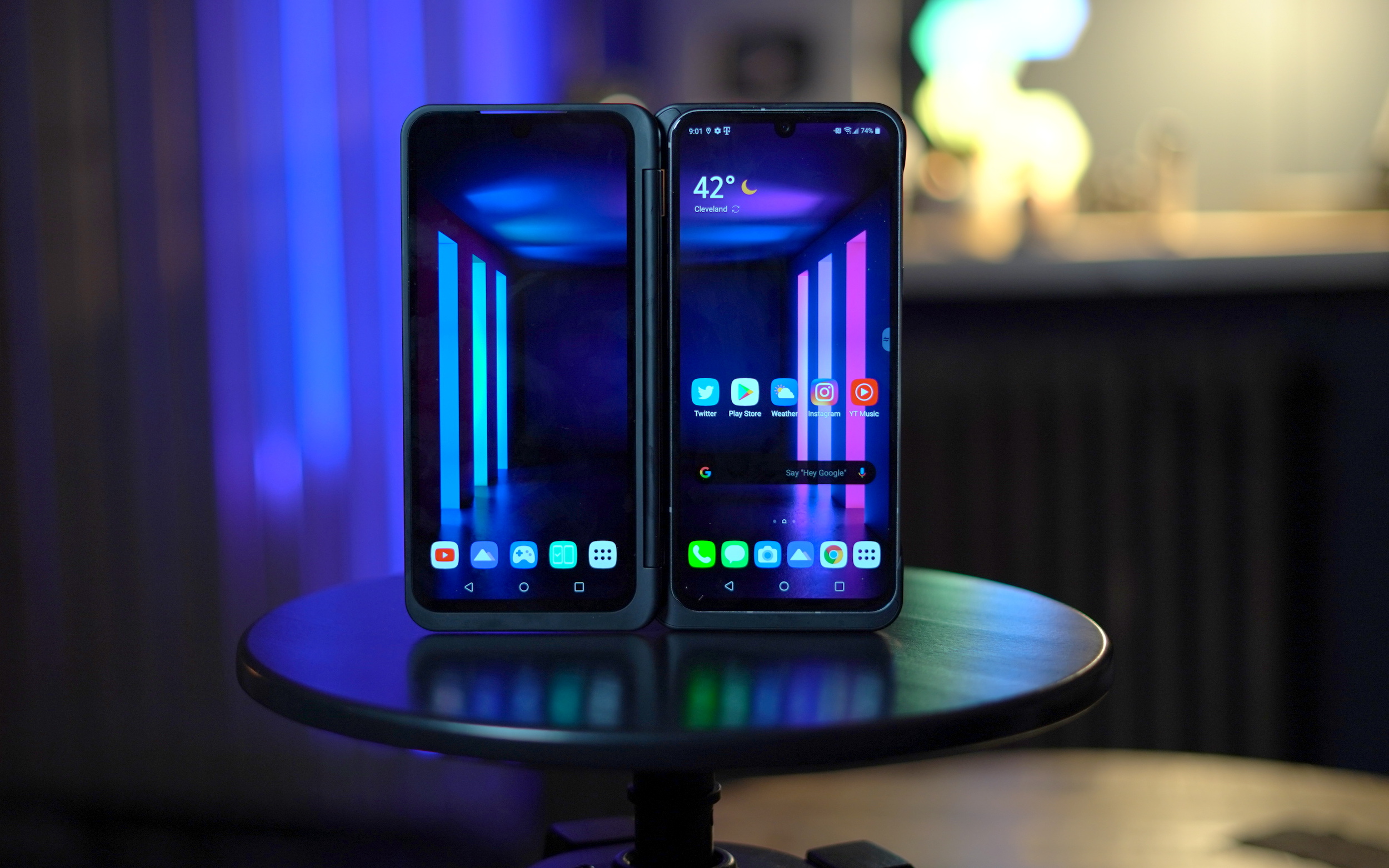
If I had to choose one feature that I’d completely swap out on the V60, it would be LG’s software. I’ll be honest, the amount of bloatware pre-installed on this phone is out of control and since all variants of the phone, at least here in the US as sold through a service provider, there’s no option for a clean unlocked build.
But even once you uninstall all the apps you don’t want, you’re still left with a launcher that lacks basic customization options while also hiding basic settings. Swapping in an alternate launcher is probably the way to go, but it won’t fix the issues completely.
The issues persist while using the dual-screen case as well. Now, I have to hand it to LG for adding a lot of functionality to the dual-screen. You can use it as a full keyboard and pretend your phone is a mini laptop, turn the screen into a dedicated gaming controller, watch two movies at once or even have an app span both screens at once.
The issue is that the controls to do any of that aren’t that intuitive with multiple taps being required to switch things around to how you want them. Fortunately, the most common use case, using different apps on each screen is simple enough. Maybe LG could come up with some gesture controls to make the dual-screen easier to use or keep on eye on Microsoft’s upcoming Surface Duo.
Don’t get me wrong, the dual-screen case for the LG V60 isn’t bad. Far from it. I’ve spent our watching movies and shows with it on one screen while keeping up with social media on the other. It’s the closest thing you’re currently going to get to the Samsung Galaxy Fold while saving half of your money.
Before I wrap things up, I’d like to point out that the LG V60 is one of the best devices right now when it comes to media consumption. Not only do the stereo speakers offer an immersive audio experience, but you also get a real 3.5mm headphone jack with a spectacular quad DAC. Now, you’ll need a good pair of wired headphones and a high-quality streaming service like TIdal to truly get the most out of it, but any true audiophile should already have those squared away.
Final thoughts
When all is said and done, I have to say that the LG V60 is a spectacular smartphone. It may be missing one or two things that you can find on Samsung’s Galaxy S20 lineup, but the combination that LG has presented delivers a mix of features found even on Samsung’s most expensive S20 Ultra while still coming up shy of the $1,000 Samsung is charging for its cheapest device.
Is it perfect? Not by a long shot!
But the LG V60 strikes just the right balance, delivering an experience that’s perfect for the average consumer while also appealing to those who may want something out of the ordinary with the dual-screen case.
LG V60 ThinQ Rating: star_fullstar_fullstar_fullstar_fullstar_50 (4.4/5)
The Good
- Amazing value
- Incredible battery life
- Great cameras
- Best flagship audio experience
The Bad
- Lackluster software
- Heavy and bulky
The Bottom Line
The LG V60 strikes just the right balance, combining flagship smartphone features that deliver a near-perfect experience at just the right price. If you’re on the market for a new flagship smartphone in 2020, the LG V60 is a fantastic alternative to Samsung’s Galaxy S20 lineup.

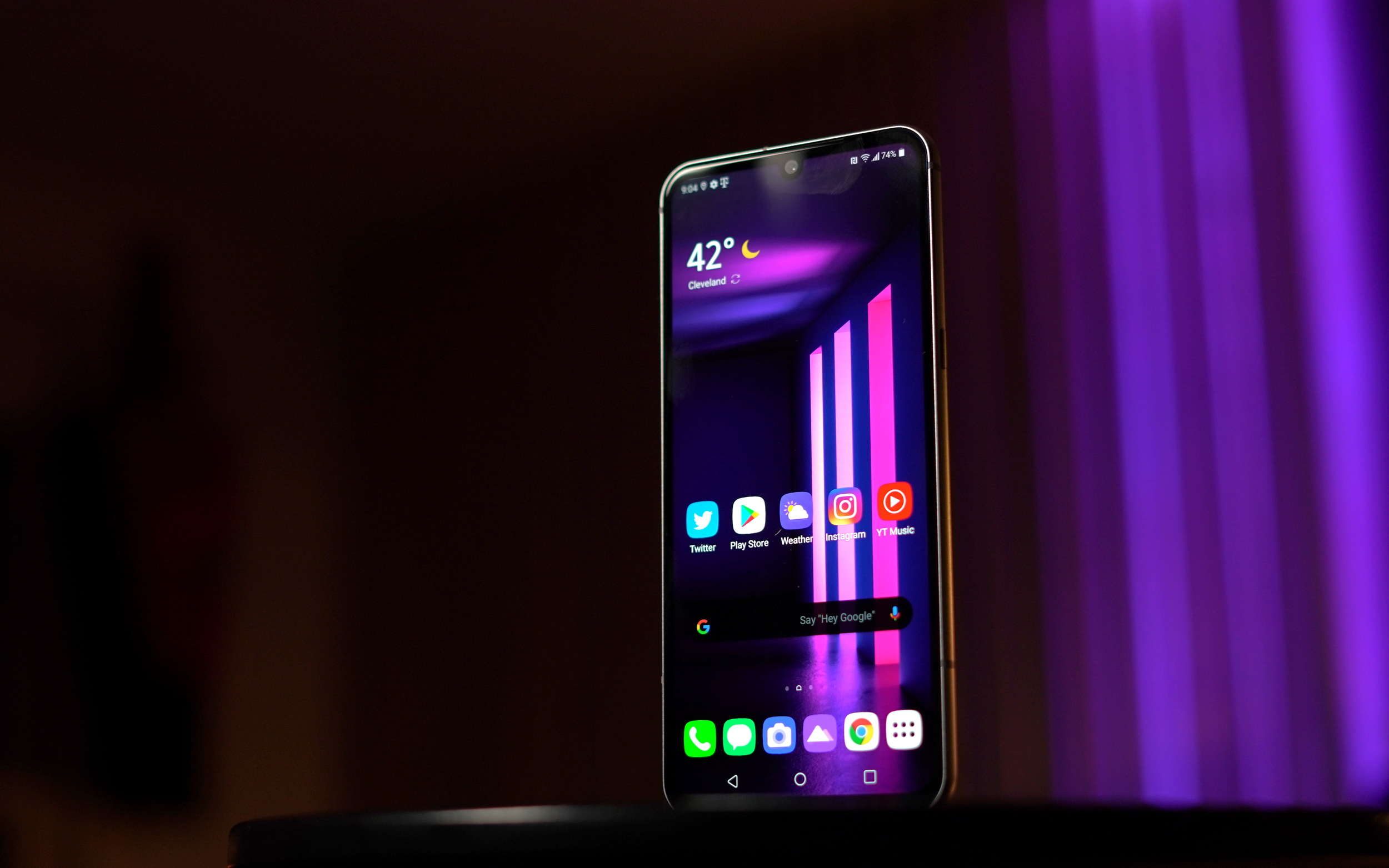





















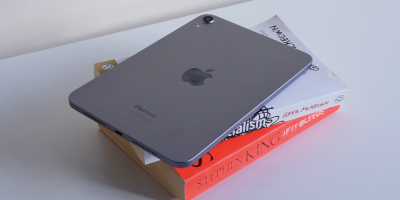







Comments